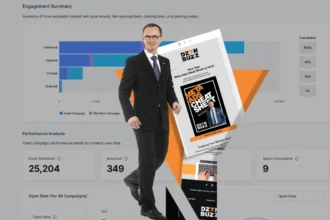Introduction
Design thinking has made its way from the studios of designers into boardrooms across industries — and for a good reason. In 2025, it’s not just a trendy buzzword. It’s a necessity for businesses that want to innovate rapidly, solve real problems, and build customer-centric solutions.
“Design Thinking is not design as a process. It is a mindset for problem-solving that prioritizes human experience and iterative innovation.”
In this blog, we will decode what design thinking actually entails, explore why it’s vital for businesses today, and give you actionable ways to apply it — even if you’re not a designer.
What Is Design Thinking, Really?
It’s is a problem-solving framework that places empathy, experimentation, and iteration at the heart of innovation. It’s about understanding human needs first and designing solutions around those needs.
The core phases of design thinking:
- Empathize – Understand the people you’re designing for.
- Define – Clearly articulate the problem.
- Ideate – Brainstorm a range of creative solutions.
- Prototype – Build real, tactile representations of ideas.
- Test – Get feedback and refine the solution.
“Design thinking shifts the focus from ‘What can we build?’ to ‘What do people truly need?’”
Why Businesses Can’t Ignore It Anymore
1. Customer Expectations Are Sky-High
Today’s consumers demand seamless digital experiences and emotionally resonant brands. Design thinking helps businesses connect the dots between user emotion, functionality, and innovation.
According to Forrester, businesses that focus on customer experience outperform their competitors by nearly 80%.
2. Faster Innovation in a Rapidly Evolving Market
Traditional processes are too linear. Design thinking embraces iteration, allowing for quicker pivots, feedback loops, and faster time-to-market.
3. Cross-Disciplinary Collaboration
Design thinking empowers non-designers — marketers, developers, sales teams — to contribute creatively. It breaks down silos and encourages holistic thinking.
Case Studies: Design Thinking in Action
Airbnb
When Airbnb was on the brink of failure, the founders used design thinking to reimagine their listings by focusing on better imagery and user experience. Result? A multi-billion dollar company built on empathy and UX.
GE Healthcare
GE redesigned its MRI machines for children using immersive themes (e.g., pirate ships), reducing fear and the need for sedation. This came from observing and empathizing with young patients — not from tech innovation alone.
Applying Design Thinking in Your Business (Even Without a Design Team)
You don’t need to be a product company or have a design team to apply this approach.
Here’s how you can start:
- Host Empathy Workshops: Talk to your customers regularly. Use surveys, interviews, or direct observation.
- Create Cross-Functional Teams: Encourage departments to brainstorm together.
- Prototype Ideas Quickly: Use low-fidelity tools (like sketches or mockups) to visualize ideas early.
- Run Design Sprints: Adopt short, 5-day sprint models to test new concepts without wasting months.
- Map Customer Journeys: Identify pain points in your service or sales process.
Pro Tip: Integrating design thinking in marketing campaigns, landing page optimization, and even ad copy can drastically improve user engagement and conversion rates.
Design Thinking + DzynBuzz = Creative Business Solutions
At DzynBuzz, we blend the principles of design thinking with data-driven digital strategy. From UX-focused website design to human-centered ad storytelling, we ensure your marketing resonates and converts.
Let’s design the future of your brand.
Explore our design-led marketing services »
Conclusion
Design thinking isn’t a luxury or trend — it’s the competitive edge that modern businesses need to thrive in 2025. By aligning your strategy with empathy, rapid experimentation, and user-first design, you unlock new levels of innovation and growth.
“It’s time to stop designing for business goals alone – and start designing for human impact.”
Key Takeaways
- Design thinking places users at the center of problem-solving.
- It encourages iteration, empathy, and collaboration.
- Businesses from Airbnb to GE have used it to create breakthroughs.
- You can apply it today — in marketing, operations, service, and beyond.
- DzynBuzz can help you adopt design thinking in your brand strategy.













